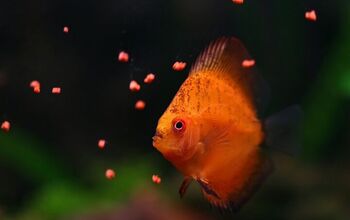How Often Should I Clean My Fish Tank?

Keeping your fish tank clean is one of the most important things you can do for the health and happiness of your aquatic pets. A clean tank supports a stable environment, prevents waste buildup, and helps keep your fish active, stress-free, and less prone to disease. But how often should you actually clean your tank? The answer depends on several factors - like tank size, the number and type of fish, and whether it’s a freshwater or saltwater setup. Let’s break it down.
Why Cleaning Matters
Fish naturally produce waste, and uneaten food, plant debris, and other organic matter contribute to rising levels of ammonia, nitrites, and nitrates - substances that can harm your fish if left unchecked. While a good filter helps manage this waste, it can’t do everything alone. That’s where routine cleaning comes in.
There are two main types of tank maintenance:
- Routine maintenance, which keeps things running smoothly week to week
- Deep cleaning, which is more thorough but done less frequently
Both are essential for keeping the ecosystem balanced and your fish thriving.
Weekly Tasks: Your Regular Cleaning Routine
Most tanks benefit from a light cleaning once a week. The key task here is a partial water change - typically about 10% to 25% of the total tank volume. This helps remove harmful buildup while restoring beneficial minerals.
During your weekly routine, aim to:
- Vacuum the gravel to remove uneaten food and waste
- Replace the siphoned water with fresh, dechlorinated water at the correct temperature
- Test the water for pH, ammonia, nitrites, and nitrates
- Wipe down the glass inside the tank to remove algae
- Check the filter to ensure it’s running smoothly
- Observe your fish for any signs of illness or odd behavior
These small but consistent steps help prevent larger issues down the line.
Monthly Tasks: A Deeper Clean
Every three to four weeks, go a little deeper. This doesn’t mean scrubbing the entire tank - just giving key components some extra attention:
- Rinse filter media in tank water (never tap water) to remove buildup while preserving beneficial bacteria
- Gently clean decorations and artificial plants to remove algae
- Trim live plants if they’re overgrown
- Stir the substrate (especially in deeper tanks) to prevent gas pockets from forming
Be careful not to overdo it - too much cleaning can disrupt the tank’s natural balance and harm the colony of beneficial bacteria that keeps the nitrogen cycle in check.
Full Cleanings: Rare, But Sometimes Necessary
A full tank clean, where everything is taken out and scrubbed, should only be done in extreme cases - like a major algae bloom, disease outbreak, or if something toxic was accidentally introduced to the tank. Even then:
- Avoid using soap or detergents, as they can leave harmful residues
- Use warm water or a mild vinegar solution for tough buildup, then rinse thoroughly
- Try to preserve as much of the existing tank water and filter media as possible to maintain bacterial balance
Watch and Adjust
Ultimately, your tank’s appearance and water test results are the best guides. If you notice cloudiness, algae overgrowth, or unusual fish behavior between cleanings, you may need to tweak your routine.
Consistency Is Key
A clean tank isn’t just about appearances - it’s about keeping your fish healthy and your underwater ecosystem stable. With regular weekly maintenance and occasional deeper cleaning, you’ll avoid most common issues and ensure your fish have a safe, sparkling home to thrive in.

A proud mama to seven dogs and ten cats, Angela spends her days writing for her fellow pet parents and pampering her furballs, all of whom are rescues. When she's not gushing over her adorable cats or playing with her dogs, she can be found curled up with a good fantasy book.
More by Angela Vuckovic

























